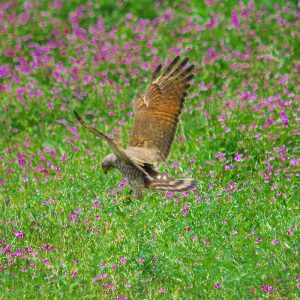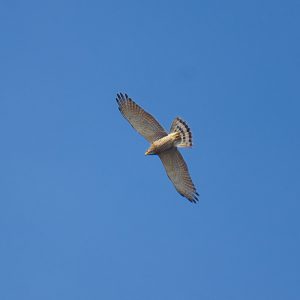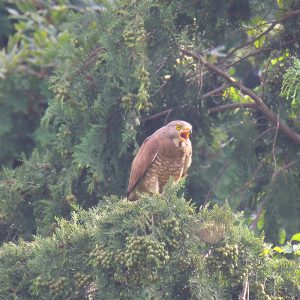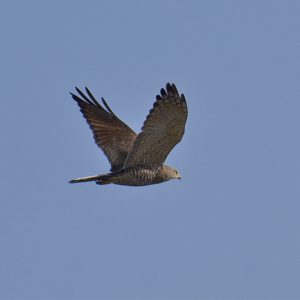むなかたが集まる
電子データベース
電子データベース
サシバ
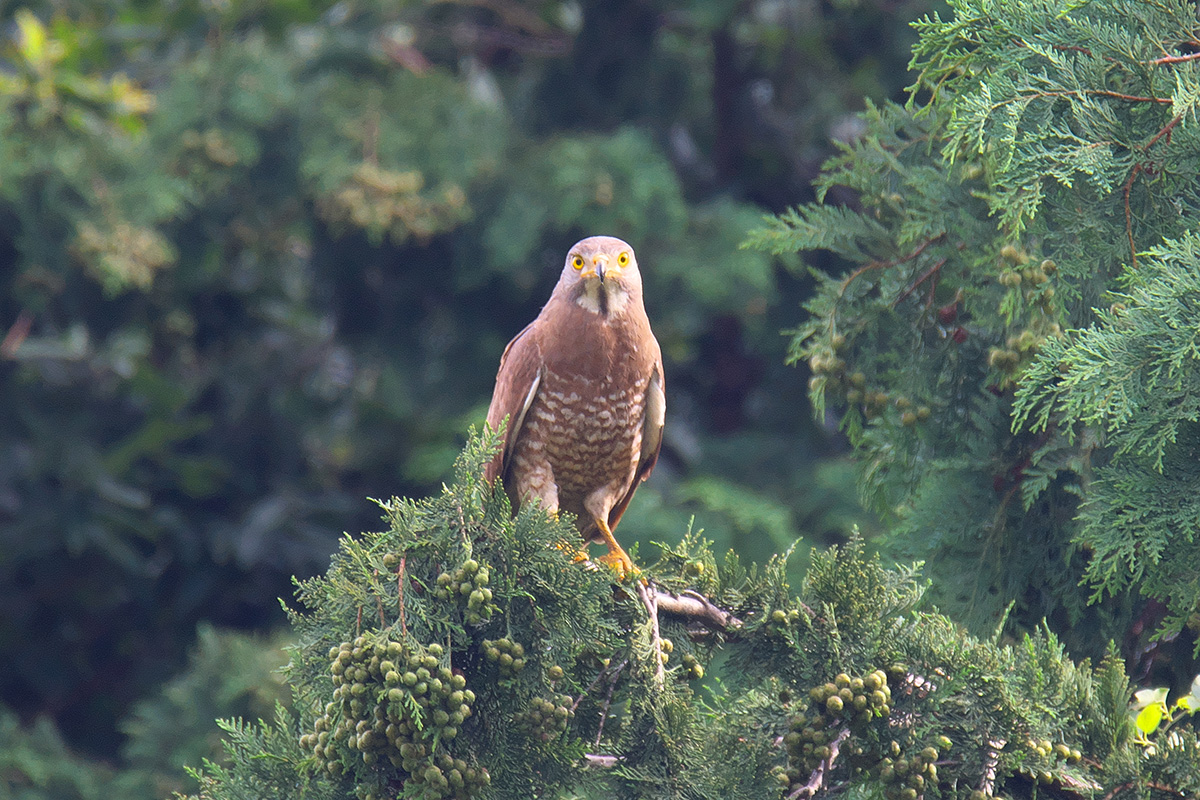
| 種目 | サシバ (差羽,鶆鳩) | 分類 |
タカ目 タカ科 サシバ属 |
学名 | Butastur indicus | 英名 | Gray-faced Buzzard-eagle |
|---|---|---|---|---|---|---|---|
|
サシバ (差羽,鶆鳩) |
タカ目 タカ科 サシバ属 |
Butastur indicus | Gray-faced Buzzard-eagle |
宗像市でみられる場所・時期
宗像では夏鳥であり,4月頃から10月ころまで見ることができる。市内の里山などで生息しており,一部では繁殖も確認されている。
特徴
全長 雄47㎝,雌51㎝(ハシボソガラスくらいの大きさ) 雌雄ほぼ同色である。
雄は,頭部に灰色みがあり,頭頂から体上面は茶褐色で胸は一様な茶褐色で斑が少ない傾向にある。喉と腹以下の体下面は白く,喉には黒褐色のやや太い顋線(縦線)が一本あり,腹以下は茶褐色の横斑がある。尾の黒帯は太く,淡色帯の数も雌に比較して少ない。
雌は,白い眉班が明瞭な傾向があり,頬の灰色部は狭い。胸から腹は白く,茶褐色の横斑がある。
習性
平地から山林の林,沢地,水田,草地などに生息する。4月頃に繁殖地にやってきて,樹上に営巣する。両生類やは虫類を好み,昆虫類や鳥類の巣立ち雛なども食べる。主に繁殖期に「ピックイー」と鳴く。
分布
夏鳥として本州,四国,九州に渡来し,南西諸島では一部が越冬する。春や秋に群れでの渡りが観察される。
日本,沿海州,朝鮮半島で繁殖し,冬は南西諸島以南の東シナ海,南シナ海周辺で過ごす。インドネシアのスマトラ島,ジャワ島,バリ島付近まで分布する。
その他
宗像市内で繁殖が確認されている。近年,太陽光発電所が各地で建設され,里山環境が少しずつ変化しているため,今後の動向が注目される。
 はじめに
はじめに お問い合わせ
お問い合わせ